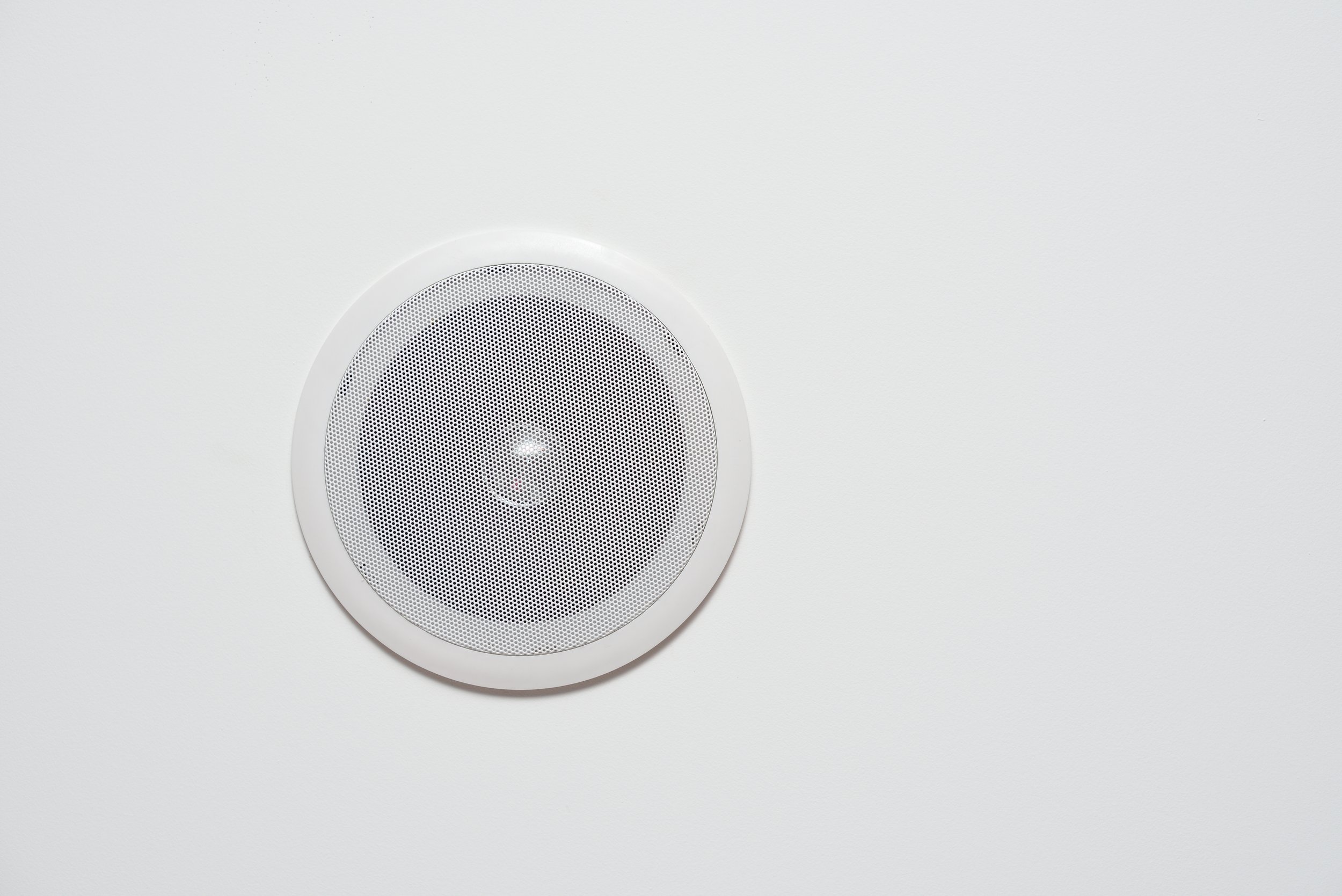A Quick and Comprehensive Guide to Outdoor Ceiling Speakers
You’re ready to enjoy your outdoor living space. You’ve marinated the chicken, fired up the grill, and cracked open a cold beverage. You turn on your stereo’s outdoor ceiling speakers to listen to your favorite tunes, and all you get is silence.
Installing an outdoor sound system is like putting a cherry on top of a sundae. You have something that’s already sweet, and you try to elevate it a bit more with a finishing touch that adds some flavor. But if that cherry is a rotten dud, it ruins everything.
With dozens of options, including wired and Bluetooth outdoor ceiling speakers, you may struggle to figure out the best option for your stereo system’s speakers. Let’s break down ceiling speakers a bit and look at some specific options so you can choose wisely.
Getting that perfect set of reliable outdoor speakers means you’ll be grilling with the family and kicking back with your favorite songs instead of struggling with your stereo setup.
Outdoor Ceiling Speakers Pros and Cons
Compared to regular speakers, outdoor ceiling speakers have some advantages and disadvantages.
Pros
Don’t take up floor, wall, or shelf space
Simple snap-in mounting options
Designed to match standard decor
Easily painted for custom applications
All wiring is hidden from view
Ceiling speakers are generally pretty affordable
Cons
Speakers will need to be waterproof
Fire insulation protection required below living spaces
Wiring can be complicated
Installations can be pricey
Outdoor Ceiling Speakers 101
Outdoor ceiling speakers typically come as pairs, and they usually have a left channel and a right channel for stereo listening. That delivers a higher-quality listening experience than simple mono speakers that lack separate left and right channels.
Now, a simpler mono speaker might work well for a very small space, like a shower area. But, for most outdoor living spaces, you’ll be best served by at least one pair of stereo ceiling speakers.
If you have a larger outdoor living space, you may also want to step up to multiple pairs. You can buy ceiling speakers that are all identical for a homogenized look and very even sound.
Or, you may want to consider using one larger set of speakers in the middle of the room and smaller satellite ceiling speakers to deliver sound to the perimeter. If you’re truly an audiophile, you may even want to purchase separate subwoofers, woofers, and tweeters for a high-end listening experience.
They typically require you to drill or cut out a space in the ceiling for the speaker to slip inside of and are secured with a set of screws or within a baffle. Then, a spring-loaded, snap-on, or magnetic cover slips over the face to match your decor.
Active Versus Passive Speakers
Passive speakers don’t have their own amplifier. Active speakers do. That’s a pretty simple distinction, but it’s very important to know which type of speaker you are buying.
Will They Work With My Existing Stereo?
Since passive speakers don’t have their own amplifier, you’ll need to run speaker wire from an amplifier to them. Attaching the wires at each end is usually pretty simple, but running the wires up inside the wall and through your ceiling void is a bit of a project.
If you go with active speakers, you’ll still need to run a wire for power.
Wired Ceiling Speakers
You’ll have to run speaker wires from an amplifier to your wired ceiling speakers. The term wired speakers is pretty much synonymous with passive speakers.
Bluetooth Outdoor Ceiling Speakers
Bluetooth speakers don’t need speaker wires to carry sound from an amplifier to your speakers.
But they’ll still require wires for power. So, consider where you can plug them in, how well you can hide the wire, and if they need to be hardwired directly into your electrical system.
Depending on how complicated your setup is, you may even need an electrician.
Best Outdoor Ceiling Speakers
Polk Audio RC80i
Available in multiple configurations and sizes
Comes with or without a subwoofer and amp
Features aim-able tweeter for more depth and focusing details
Not waterproof
Wired speakers
OSD ICE800WRS
High power
Low-profile design for installation in small ceiling voids
Wired speakers
Waterproof
Low-profile magnetic grille
Directs sounds toward the listening area
Audiophile sound quality
Wired speakers
Pyle Bluetooth Ceiling Speakers
Bluetooth connectivity for streaming
Active design requires power wiring
Flush mount
Decent power
Sound quality lacking compared to wired models
Outdoor Ceiling Speakers: Shopping and Planning
There are lots of outdoor ceiling speakers available. Depending on the type of sound you want and the design you’re working with, you’ll have to choose with an eye to your specific floor plan and application.
Consider these other factors while you’re shopping.
Planning Your Outdoor Ceiling Speaker Layout
Anytime you’re mounting a ceiling speaker in an outdoor space, consider the IP rating to make sure that the elements and ambient moisture won’t damage them. IP65 speakers are water-resistant. So, they’re appropriate for a covered outdoor patio.
But they’re not waterproof. Keep a close eye on this specification.
This same consideration applies to indoor speakers mounted in damp locations, like inside a bathroom where there will be added moisture from the shower and the potential for splashes.
How Far Apart Should They Be?
Wondering where should outdoor ceiling speakers be placed? If you are installing stereo speakers with dedicated left and right speakers instead of a mono speaker, you need to space them out. No two floor plans are alike, but you might want to consider installing your ceiling speakers around focal points in your design.
Simply, instead of randomly or symmetrically placing them arbitrarily, follow the manufacturer’s instructions for spacing, and consider placing them optimally to deliver sounds to outdoor features where people will congregate most, like tables and chairs, the bar, or a central island.
What Surfaces Can They Be Mounted In?
Ceiling speakers need space behind the surface of the ceiling. If your ceiling lacks that space, called a void, outdoor speakers might not work for you.
You’ll need to find room to run speaker cables from an amp for passive ceiling speakers. Even active speakers and Bluetooth-capable models with their own dedicated amps still need power.
Are They Loud Enough?
Just like in other applications non-ceiling applications, there is a huge range of quality and power in speakers that mount into ceilings.
Typically, a standard speaker is about 6.5 inches. Larger speakers, especially dedicated subwoofers, carry a bit more bass. Tweeters speakers, which are smaller, are sometimes dedicated to higher frequency sounds (treble).
But size isn’t always an indicator of power. Some smaller models can deliver quite a bit of punch, particularly when paired with other speakers or even a subwoofer.
Budgeting
High-quality speakers can be extremely expensive. But, if you’re working on a shoe-string budget and doing the install yourself, you can have a nice set of outdoor ceiling speakers up and running for just a couple of hundred dollars, depending on how much wire you need and if you already have an amp (if needed).
At the other end of the spectrum, audiophile sound from a professionally installed system can cost thousands of dollars.
Will They Match My Design?
Most ceiling speakers allow you to remove the grill, so you can paint them to match your decor. Just make sure to follow the manufacturer’s recommendations carefully.
Bottomline
Outdoor ceiling speakers can significantly boost your enjoyment of outdoor living space. Adding some audio to your patio is relatively easy to do, especially with DIY knowledge and skills.
Now that you know a bit about outdoor ceiling speakers, start your planning today!

